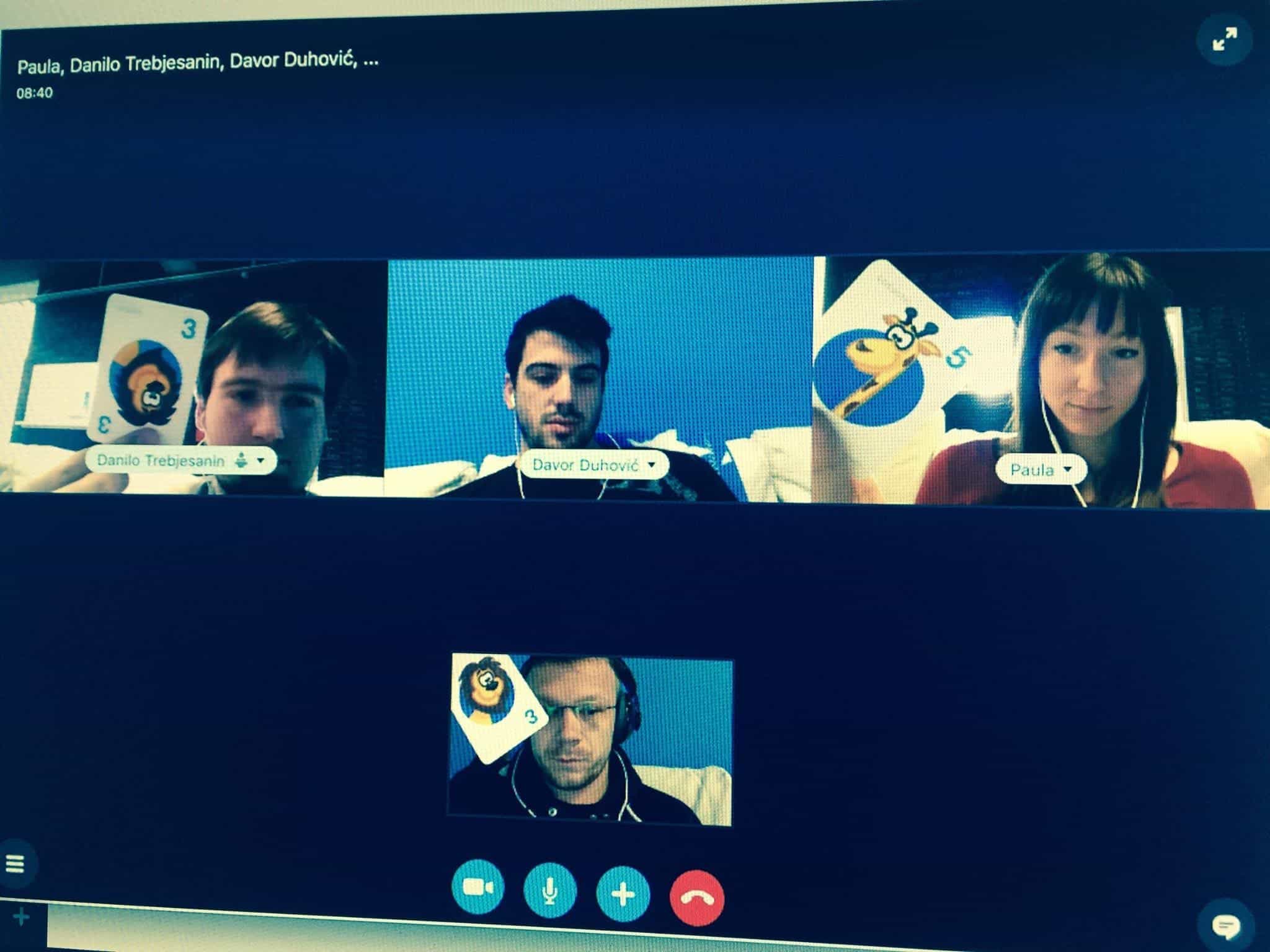Managing remote development teams requires an approach that prioritizes communication, collaboration, and a strong sense of team unity. In the following paragraphs, we will go through some strategies I found useful while managing remote teams in Locastic. I hope this helps to ensure your remote team operates smoothly and efficiently.
Let’s talk about communication…
First you should prioritize communication methods that have quick and effective interactions. Video calls should be your go-to for important meetings and discussions, as they allow for visual cues and a more personal connection. Following closely are audio-only calls, which provide direct communication and are more immediate than text-based methods. Regular chat (such as Slack) is excellent for day-to-day questions and updates, allowing for quick exchanges that keep the work moving. In contrast, emails should be the slowest form of communication you use, and should be reserved for client approvals, and formal documentation where immediacy is not a priority.

Effective communication also means coordinating across different time zones. Establish a schedule that accommodates all team members as much as possible. Regular standups, refinements, and planning sessions should be scheduled at times when the majority of the team is available. This will help build a team routine and ensure that everyone is on the same page, reducing misunderstandings and enhancing collaboration.
The importance of in-person meetings for remote teams
While remote work offers flexibility, it is beneficial to bring the team on-site every once in a while, if possible. In-person meetings and team-building activities significantly enhance team morale. These sessions allow team members to connect on a personal level, strengthening the sense of unity and collaboration that can be challenging to maintain remotely.
How to create a sense of team ownership?
This is why creating a sense of team ownership is critical, especially with remote teams. Your team should function as a cohesive unit rather than a group of freelancers working independently.
In Locastic we utilize online collaborative tools like Google Suite, Miro, Jira, FigJam, and Slack to include everyone in conversations and decision-making processes.
To create a sense of ownership, you need to set clear expectations. Defining when meetings will be held, which communication channels will be used, and what the expected workflow is helps avoid confusion and ensures everyone knows what is expected of them. This clarity helps the team stay aligned and focused on their goals. Knowledge hubs are very useful for remote teams. Documenting your workflows and processes in a centralized, easily accessible location ensures that everyone has the information they need. This hub should be a collaborative effort, allowing team members to contribute and update documentation as needed.
Discovery eBook
Great digital products don’t come with shortcuts. They come from thinking clearly, planning wisely, working closely and building with purpose. That’s how we approach every project in Locastic – from idea to launch and beyond.

Support remote team productivity
Make sure that all team members have a good internet connection and access to necessary tools and resources. Technical issues can significantly hinder productivity, so it’s essential to address these upfront to maintain a proper workflow.
One of the significant benefits of remote work is the flexibility it offers. Embrace this flexibility and focus on the results rather than micromanaging the hours logged online. Quality of work should always take precedence over the quantity of online time. Trusting your team to deliver quality work within the agreed timelines can lead to higher job satisfaction and better productivity. Planning for different holidays and off-times is also critical to accommodate your international team. By being aware of and respecting different cultural and national holidays, you can ensure that everyone gets their deserved time off without impacting project timelines.

Remote team members can often feel neglected compared to their in-house counterparts. Acknowledging their contributions and efforts regularly helps to make them feel valued and appreciated.
Lastly, maintain regular communication with your remote team members to prevent burnout. Since you don’t see them in person, it’s harder to spot signs of stress or burnout. Regular check-ins allow you to provide support as needed. Being proactive in this regard can help in maintaining a healthy and motivated team.
By following these strategies, you can manage your remote development team effectively, ensuring high productivity, strong team spirit, and consistent project success.








